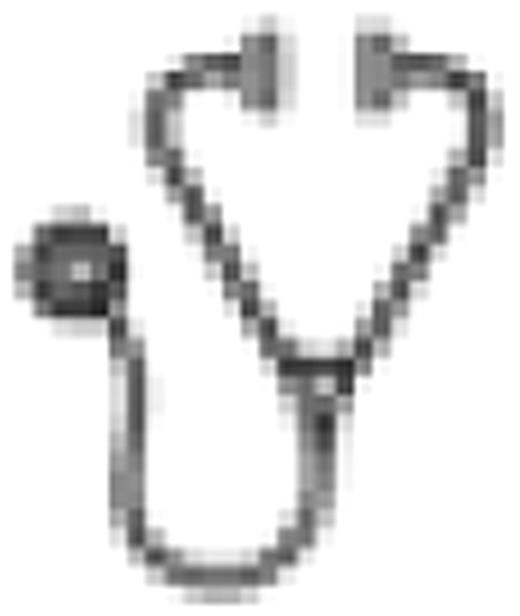Abstract
Abstract 2305
HCT using RIC regimens has increased steadily over the past decade. In vivo administration of anti-T cell antibodies, such as alemtuzumab and anti-thymocyte globulin (ATG) preparations, is often employed to promote engraftment and limit graft-versus-host disease (GVHD). While these antibodies might reduce the severity and incidence of GVHD, they may also blunt the allo-immune graft-versus-tumor effect of HCT. Transplant outcomes after in vivo T-cell depletion (n=584 ATG; n=213 alemtuzumab) were compared to those after T-cell replete (n=879) RIC transplants for myeloid and lymphoid malignancies. Patients were aged 21–69 yrs and transplanted from 2000–2007. Median follow-up of patients is 3 years. Conditioning regimens consisted of an alkylating agent (melphalan, busulfan, or cyclophosphamide) with fludarabine. 792 patients (47%) received allografts from a HLA-matched sibling, 650 (39%) from an 8/8 and 234 (14%) from a 7/8 HLA-matched unrelated donor. In vivo T-cell depletion was used for 35% of matched sibling HCT, 57% of 8/8 and 64% of 7/8 HLA matched unrelated donor HCT. Results of multivariable analysis adjusted for age, disease and disease stage, donor, year of transplant, conditioning regimen, and GVHD prophylaxis are shown in Table below. Grade 2–4 acute GVHD was lower with alemtuzumab containing regimens (20%) than ATG containing (41%) or T replete (42%) regimens. Chronic GVHD occurred in 27% of recipients of alemtuzumab, 43% of ATG, and 57% of T replete regimens, respectively. Compared to T-cell replete regimens, relapse risks were higher with ATG and alemtuzumab containing regimens (38%, 49% and 51%, respectively) and non-relapse mortality, higher with ATG containing regimens only. Treatment failure (relapse or death) was higher with both ATG and alemtuzumab containing regimens compared to T replete regimens. Overall mortality was highest with ATG containing regimens. These observations are independent of disease, disease status and donor type including 7/8 HLA-matched HCT. The 3-year probabilities of disease-free survival (DFS) were 25%, 30% and 39% with ATG-containing, alemtuzumab-containing and T-cell replete regimens, respectively. Corresponding probabilities for overall survival were 38%, 50% and 46%. There were no differences in disease-free and overall survival at 3-years by ATG source or dose. The incidence of EBV-PTLD was higher with alemtuzumab and ATG containing compared to T-cell replete regimens (2% vs. 2% vs. 0.2%). These results suggest in-vivo T-cell depletion with RIC regimens containing an alkylating agent and fludarabine significantly lowers DFS despite lower GVHD. The routine use of in-vivo T-cell depletion in this setting warrants a cautious approach in the absence of a prospective randomized trial.
| . | Alemtuzumab vs. T-cell replete . | ATG vs. T-cell replete . | Alemtuzumab vs. ATG . |
|---|---|---|---|
| Hazard ratio, p-value . | Hazard ratio, p-value . | Hazard ratio, p-value . | |
| Grade 2-4 acute GVHD | 0.33, p<0.0001 | 0.88, p=0.12 | 0.38, p<0.001 |
| Grade 3-4 acute GVHD | 0.42, p<0.0001 | 0.86, p=0.20 | 0.48, p=0.001 |
| Chronic GVHD | 0.34, p<0.0001 | 0.69, p<0.0001 | 0.49, p<0.0001 |
| Non-relapse mortality | 1.04, p=0.85 | 1.34, p=0.01 | 0.78, p=0.19 |
| Relapse | 1.54, p=0.0001 | 1.53, p<0.0001 | 1.01, p=0.94 |
| Treatment failure | 1.40, p=0.0003 | 1.46, p<0.0001 | 0.96, p=0.67 |
| Overall mortality | 1.09, p=0.46 | 1.25, p=0.002 | 0.87, p=0.22 |
| . | Alemtuzumab vs. T-cell replete . | ATG vs. T-cell replete . | Alemtuzumab vs. ATG . |
|---|---|---|---|
| Hazard ratio, p-value . | Hazard ratio, p-value . | Hazard ratio, p-value . | |
| Grade 2-4 acute GVHD | 0.33, p<0.0001 | 0.88, p=0.12 | 0.38, p<0.001 |
| Grade 3-4 acute GVHD | 0.42, p<0.0001 | 0.86, p=0.20 | 0.48, p=0.001 |
| Chronic GVHD | 0.34, p<0.0001 | 0.69, p<0.0001 | 0.49, p<0.0001 |
| Non-relapse mortality | 1.04, p=0.85 | 1.34, p=0.01 | 0.78, p=0.19 |
| Relapse | 1.54, p=0.0001 | 1.53, p<0.0001 | 1.01, p=0.94 |
| Treatment failure | 1.40, p=0.0003 | 1.46, p<0.0001 | 0.96, p=0.67 |
| Overall mortality | 1.09, p=0.46 | 1.25, p=0.002 | 0.87, p=0.22 |
No relevant conflicts of interest to declare.

This icon denotes an abstract that is clinically relevant.
Author notes
Asterisk with author names denotes non-ASH members.

This feature is available to Subscribers Only
Sign In or Create an Account Close Modal